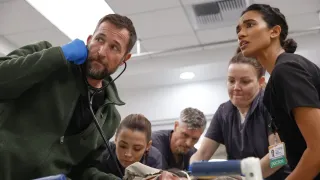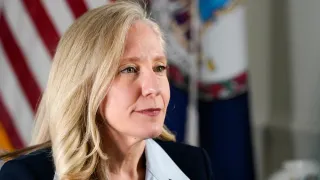July 24, 2016
International AIDS Conference Looks at Advances and Barriers
Liz Highleyman READ TIME: 4 MIN.
While remarkable gains have been made in preventing and treating HIV over the past 16 years, this progress could be reversed without adequate funding and respect for the human rights of the people most at risk, speakers said at the 21st International AIDS Conference this week in Durban, South Africa.
"We call for AIDS 2016 to finish what we started in 2000," United Nations Secretary-General Ban Ki-moon said at an opening news conference on July 18. "We must close the gaps that keep people from accessing services and living with dignity. We can end stigma and discrimination, prevent the spread of HIV, and save lives."
Effective antiretroviral therapy arrived in the mid-1990s, but it was not until the AIDS conference in Durban in 2000 that widespread access to treatment for people in low-income countries was put forth as a global priority. This year's theme - "Access, Equity, Rights Now" - recognizes the barriers that must still be overcome to achieve universal access to treatment and new biomedical HIV prevention methods such as PrEP.
"The 2000 conference was a catalyst for historical change and launched a global movement to bring lifesaving treatment to people around the world," AIDS 2016 Co-Chair Olive Shisana said in her opening remarks. But "progress is precarious" and requires structural changes in laws and policies to expand access.
UNAIDS has set a goal that 90 percent of people with HIV be tested, 90 percent of those who test positive will start treatment, and 90 percent of those on treatment will achieve undetectable viral load by 2020. The agency recently announced that an estimated 17 million people with HIV were receiving antiretrovirals at the end of 2015. South Africa - which has the world's largest treatment program - now has about 3.4 million people on therapy. But still over half of those who need treatment are not yet receiving it.
Preceding the AIDS 2016 opening ceremony Monday, July 18, several thousand AIDS activists from around the world joined together in a march to demand universal access to HIV treatment and prevention for everyone who needs it.
At the end of the march, which wound from Durban City Hall to the convention center, activists presented memoranda to leaders including UNAIDS Executive Director Michel Sidibe, U.S. Global AIDS Ambassador Deborah Birx, and South African deputy President Cyril Ramaphosa.
"Our political leaders want to talk about the millions who are on treatment - which is a far cry from the last Durban AIDS conference," said Anele Yawa of the Treatment Action Campaign. "But we know that instead we have to tell the truth about the majority who still lack access."
Sidibe, in his keynote speech opening the conference, said he feared progress has stalled - and in some areas gains have even been reversed. The number of new infections has remained stubbornly flat over the past five years, and many wealthy donor countries have scaled back their support for global AIDS funding.
"Our progress is incredibly fragile," he said. "If we do not act now we risk resurgence and resistance."
Key Groups Highlighted
Speaker after speaker at the conference emphasized the importance of reaching the groups most vulnerable to HIV, including women and girls, youth, gay and bisexual men, transgender people, sex workers, prisoners, and people who inject drugs.
In some parts of the world nine out of 10 people living with HIV belong to these groups, according to Shisana, and women and girls account for nearly 60 percent of people with HIV in Sub-Saharan Africa.
This year's conference featured a special emphasis on youth, who have high rates of HIV in many areas - including the U.S., where new infections are highest among young black gay men.
Gay and transgender people, sex workers, and people who use drugs are more vulnerable due to stigma, discrimination, and criminalization, which can prevent them from living their lives openly and accessing the services they need, speakers pointed out.
"Human rights is fundamental to fighting HIV - science alone cannot save our lives," said Michael Ighodaro, an HIV-positive young gay man from Nigeria who sought asylum in the U.S. after a homophobic attack. "We don't have to be here [for another AIDS conference] in 20 years, and I hope we're not."
While past conferences have often focused on scientific advances in treatment and biomedical prevention, many sessions at AIDS 2016 look at how to translate these breakthroughs into widespread practice - a challenge that will require social, cultural, political, and legal change.
Yet the conference still featured plenty of science, including new data on PrEP and other biomedical prevention methods that will be reported in more detail in a future issue.
HIV cure research was the topic of the International AIDS Society's Towards an HIV Cure symposium preceding the main conference.
Cure science has suffered setbacks in recent years - as people who appeared to be controlling HIV without treatment experienced viral rebound - but basic research continues on a variety of approaches. Most experts think a combination will be needed to achieve sustained viral remission.
"As difficult as it is, I'm confident we're going to make progress that will be impressive," National Institute of Allergy and Infectious Diseases director Dr. Anthony Fauci said at the symposium. But he cautioned, "I can't tell you when we're going to have a cure, because I can't be sure if we're going to have a cure."






